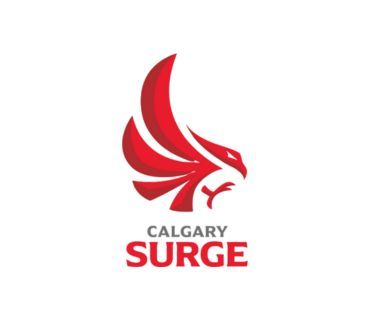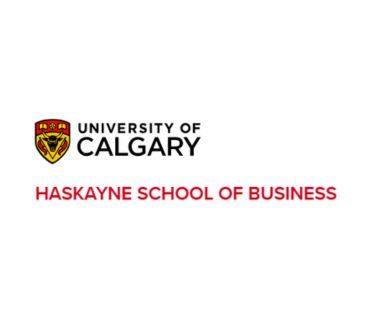Community & Giving
We are passionate about giving back and making a positive impact on the communities in which we live and work. Below is a list of local and national organizations we’ve had the privilege of getting involved with, whether through our time, resources or other forms of engagement.

Montreal General Hospital Foundation
Major donor to the Clinical Innovation Platform (CLIP).

Calgary Surge
Official Wealth Management Partner of the Calgary Surge, a professional basketball team based in Calgary, Alberta.

Gordon Hoffman Charity Golf Tournament
Sponsor of the Gordon Hoffman Charity Golf Tournament. Proceeds of the tournament help children and their families affected by Learning Disabilities and ADHD in Calgary, ensuring they are able to access the programs and services needed for success.

Shaw Charity Classic Golf Tournament
Sponsor of the Shaw Charity Classic. The SCC is a professional annual golf tournament in Calgary that benefit charities, children, and families in Alberta and has raised more than $93 million for over 270 children and youth charities across the province.

Sun Youth Organization
Every year, we host an annual holiday drive to collect food and new toys for children and families in need in Montreal.

Concordia University
In-course scholarship established by RWM in 2023. This scholarship is intended to encourage and reward full-time JMSB students who identify as members of an underrepresented group.

University of Calgary
The Rothenberg Wealth Management Award was established in 2023 to help remove the financial barriers for deserving students of color to pursue their education at the Haskayne School and focus on their studies.

Bell Let’s Talk day

Brain Canada Foundation

Tribute To Dr. Mulder (2023)

Calgary Interclub Squash Association (CISA)
Proud Title Sponsor of the 2023/2024 Men’s Level 1 Final.
Rothenberg Gives Back

As the year draws to a close, it’s the perfect time to review your finances and ensure you’re taking advantage of every opportunity to save. A year-end financial checklist can help you optimize tax credits, deductions, and benefits before the deadline. Here are key items to consider:
Pension income splitting — Those who receive a pension may be eligible to split up to 50% of eligible pension income with a spouse
Guaranteed income supplement — If you received the guaranteed income supplement or allowance benefits under the old age security program, you can renew the benefit by filing by the deadline.
Registered retirement savings plan (RRSP) — You have until December 31 of the year in which you turn 71 to contribute to your RRSPs.
Goods and services tax/harmonized sales tax (GST/HST) credit — You may be eligible for the GST/HST credit, a tax-free quarterly payment that helps offset all or part of the GST or HST you pay. To receive this credit, you must file an income tax and benefit return every year.
Medical expenses — You may be able to claim eligible medical expenses that you paid, provided the expenses were made over the 12-month period ending in 2024 and were not previously claimed. This can include amounts claimed for attendant care or care in an establishment.
Age amount — If you are 65 years of age or older on December 31, 2025, and if your net income was less than $102,925.
Pension income amount — You can claim up to $2,000 if you report eligible pension, or annuity payments on your tax return.
Registered disability savings plan (RDSP) — This savings plan can help families save for the financial security of a person who is eligible for the disability tax credit. RDSP contributions are not tax deductible and can be made until the end of the year in which the beneficiary turns 59.
Disability amount — If you, your spouse or a dependent have severe and prolonged impairments in physical or mental functions and meet certain conditions, you may be eligible for the disability tax credit (DTC).
Family caregiver amount — Those caring for a dependent with impairment in physical or mental functions may be able to claim up to $2,616 when calculating certain non-refundable tax credits.
Tax-Loss selling – Tax-loss selling can be a valuable strategy. For more details, check out our recent article on this topic: Potentially lower your taxes with tax-loss harvesting – Rothenberg Wealth Management
Taking time now to review these opportunities can help you reduce your taxes and maximize benefits. If you’re unsure which credits apply to you, contact your Rothenberg Wealth Management advisor for personalized advice.

When building a portfolio that generates income, Canadian investors often weigh the benefits of dividend-paying investments, interest-bearing assets, and capital gain opportunities. While all three can contribute to overall returns, their tax treatment, growth potential, and strategic advantages differ significantly.
What is interest income?
Interest income is earned from fixed-income investments such as:
- Guaranteed Investment Certificates (GICs)
- Bonds
- High-interest savings accounts
Interest income is taxed at the investor’s full marginal tax rate, making it the least tax-efficient form of investment income in non-registered accounts.
Despite its tax inefficiency, interest income has its place. It offers predictable returns, ideal for conservative investors or short-term goals.
Example: John earns $1,000 in interest from a GIC. At a 30% tax rate, he owes $300 in taxes.
What is dividend income?
Dividend income is earned when publicly traded companies distribute a portion of their profits to shareholders. These dividend payments can be made monthly, quarterly, semi-annually or annually, depending on the company.
Your dividends are taxed differently depending on whether they are eligible or noneligible.
Eligible Dividends
- An eligible dividend is a type of dividend that Canadian corporations can pay to shareholders, which qualifies for a preferential tax treatment under Canadian tax law.
- It is paid by Canadian public or private corporations from income that have already been taxed at the general corporate tax rate.
- These dividends are “grossed up” by 38% to reflect the tax already paid by the corporation. This means the amount added to your taxable income is higher than the actual dividend received.
- After gross-up, a federal dividend tax credit is applied to reduce your personal tax liability, so you ultimately pay less tax than you would on a non-eligible dividend.
- Your T5 slip will show you if it is an eligible dividend.
Non-eligible dividends
- Typically paid by small businesses from income taxed at the lower small business tax rate.
- These are grossed up by 15%, reflecting the lower corporate tax paid.
- A smaller dividend tax credit is applied, but it still helps reduce the overall tax burden.
Important Notes
- Foreign dividends do not qualify for the dividend tax credit.
- The dividend tax credit varies by province, so your location affects how much tax you save.
Example: John receives $1,000 in eligible dividends:
- Grossed up: $1,000 × 1.38 = $1,380
- Tax owed: $1,380 × 30% = $414
- Tax credit: $1,380 × 15% = $207
- Final tax: $414 – $207 = $207
What are capital gains?
Capital gains refer to the profit made from selling a capital asset such as a stock, bond, real estate and other investment for more than its original purchase price, also known as its adjusted cost base (ACB).
As of 2025, the capital gains inclusion rate is 50%, meaning:
- Only half of your capital gain is added to your taxable income.
- That amount is then taxed at your marginal income tax rate (federal + provincial).
Example: John sells a stock for $30,000, originally bought for $15,000.
- Capital gain: $15,000
- Taxable portion: $15,000 × 50% = $7,500
- Tax owed: $7,500 × 30% = $2,250
Final thoughts
Keep in mind that dividend, interest, and capital gains income can grow tax-deferred in an RRSP or tax-free in a TFSA. These registered accounts offer powerful tools for maximizing your investment returns while minimizing your tax burden.
For Canadian investors focused on tax-efficient income, dividend-paying investments often deliver greater long-term value. However, the most effective strategy considers your risk tolerance, investment timeline, and account type.
At Rothenberg Wealth Management, we’re here to help you build a portfolio that aligns with your financial goals and optimizes your after-tax returns. A balanced approach that incorporates all three income types, dividends, interest, and capital gains, can help optimize your portfolio for both growth and tax efficiency.
Want to see how different types of investment income are taxed?
Try our Taxes and Investment Income Calculator for a quick comparison: Taxes & Investment Income – Rothenberg Wealth Management

Tax-loss harvesting, also known as tax-loss selling, is a powerful strategy that can enhance the tax efficiency of your investment gains. This strategy involves selling underperforming investments and realizing a capital loss that can then be used to offset capital gains from other investments.
As a brief refresher:
- Capital gains are triggered when you sell an investment for more than the price you purchased it for (profit).
- Capital losses are triggered when you sell an investment for less than the price you purchased it for (loss).
- Capital gains are included in your annual taxable income and taxed at your marginal tax rate. For individuals, the inclusion rate is 50% for capital gains.
While the idea of intentionally selling a losing investment may seem counterintuitive, this can be a smart way to reduce your tax liability or in other words, the amount of taxes you owe.
Tax-Loss Harvesting Example
Suppose you purchase 100 shares of XYZ at $10-per-share, for a total of $1,000. Over time, the price of XYZ falls to $6-per share, and your 100 shares are now worth $600. You choose to sell all XYZ shares for $600 and realize a loss of $400 on your initial investment. This loss is considered a capital loss and can be applied against any capital gains realized in the same tax year, thus reducing your total taxable capital gains.
Say you also realize $2,000 in capital gains in that same tax year. Your $400 loss can be used to offset part of those gains. After netting the capital gains and losses, you would pay taxes on $800 of your earnings at the 50% inclusion rate for capital gains ($2,000 – $400 = $1,600 * 50%).
Had you not used tax-loss harvesting, you would report $2,000 in capital gains and pay taxes on $1,000 (50% of $2,000). In this example, you are reducing your reported capital gains by 20% using tax-loss harvesting.
Key Considerations
The above example provides a simplified illustration of tax-loss harvesting. In reality, most investors hold diversified portfolios with investments across account types, asset classes and sectors that require regular rebalancing and are subject to different tax treatments. This interplay can make tax-loss harvesting even more nuanced. Several other considerations should be kept in mind when tax-loss harvesting.
1. Eligible Investments
Tax-loss harvesting only applies to realized capital gains and losses in non-registered accounts. Losses within registered accounts, such as RRSPs and TFSAs, cannot be used for tax purposes, as gains and losses within these accounts are not taxed until withdrawals are made. In other words, capital losses in registered accounts cannot offset capital gains in non-registered accounts.
Alternative and private investments, such as private equity or private real estate, may also benefit from tax-loss harvesting, though challenges like liquidity, valuation, transaction costs, lock-up periods and differing tax treatments must be carefully considered.
2. Superficial Loss Rule
The Superficial Loss Rule prohibits you from claiming a tax deduction on a capital loss if you repurchase the same or identical investment within 30 days before or after the sale.
The Superficial Loss Rule is an important consideration when tax-loss harvesting, but with careful planning, you can sidestep it using strategies such as waiting 31 days before repurchasing the same investment or buying a similar but not identical investment.
3. Carry-Back & Carry-Forward Rules
Capital losses can be carried back three years or forward indefinitely to offset capital gains in those years.
For example, if you realize a capital loss in 2025, you could carry that loss back to offset any capital gains from 2022, 2023 or 2024 by filing a T1 Adjustment Request. If the loss isn’t used in the current year or carried back, it can be carried forward to offset capital gains in future years.
Final Thoughts
Tax-loss harvesting is often associated with year-end tax planning, as investors try to reduce their tax liability for the current year. However, it can be done throughout the year, especially if there are market fluctuations that create opportunities for harvesting losses. It’s important to work with an experienced financial professional like a Rothenberg Wealth Management Advisor to assess whether you can benefit from tax-loss harvesting and how you can implement this strategy to maximize your portfolio’s tax efficiency and reduce the amount of taxes owed.

As the school year kicks into full gear, it is a good time to discuss the best practices relating to Registered Education Savings Plans (RESPs). First, let’s go over the basics!
RESP Basics
An RESP is generally the best way to save for education for two primary reasons:
1) tax-sheltered investments and
2) the Canada Education Savings Grant.
The total lifetime RESP contribution limit is $50,000 per beneficiary. The beneficiary is the student who will be using the RESP money for their education. Unlike Tax-Free Savings Accounts (TFSA) and Registered Retirement Savings Plans (RRSP), this limit has no annual contribution limit.
Eligible RESP contributions can earn a 20% matching grant from the government called the Canada Education Savings Grant (CESG) on the first $2,500 contributed to an RESP each year, capping at $7,200 of lifetime CESG per student.
Investment products that can be held in an RESP include the standard ones just like in TFSAs and RRSPs, such as stocks, bonds, mutual funds, ETFs, and more.
When original contribution money is withdrawn from an RESP, it is not taxable! But investment growth and government grants, such as CESG, are taxable to the student when withdrawn. Those taxes apply upon withdrawal, and investment returns, including capital gains, dividends, and interest earned, are tax-sheltered inside an RESP.
Lump-Sum or Regular Contribution?
With the basics rules out of the way, let’s look into some contribution strategies. While contributing the maximum lifetime amount of $50,000 as early as possible may seem attractive to maximize compound growth and have the money grow in a tax-sheltered environment, it means that you are losing out on a lot of CESG money. This is because the CESG only matches 20% of the first $2,500 contributed per year. If you have a large lump sum to contribute to an RESP, another option is to contribute it to a TFSA first and slowly move it over to the RESP as the years go by. Ultimately, the perfect solution for you will depend on your personal situation, which is why our Wealth Management Advisors take the time to get to know your needs and goals.
What if your child doesn’t pursue post-secondary education?
If your child does not continue school after high school and you have been saving in an RESP, then once the RESP’s deadline is reached, the CESG funds received must be repaid in full and your original contributions are returned without penalty. However, the growth on those investments will be taxed upon withdrawal and is subject to a 20% penalty. Because an RESP can remain open for 35 years, there is plenty of time to plan the best way to withdraw funds from an RESP in the event that the beneficiary does not pursue post-secondary education.
One way is to stop RRSP contributions and slowly transfer the balance of your RESP to the RRSP. Transferring money this way means that, up to $50,000, the money will remain tax-deferred and will avoid the 20% penalty. Another way to reduce the impact of this tax and penalty is to withdraw the money during a year when your income is lower than usual.
Finally, it is likely that even if it is not a full university degree, there are plenty of educational programs that could suit your child. College and university courses are not the only ones that quality for funding. Enrolment alone qualifies RESP educational withdrawals, meaning that whether a course is passed or not will not affect your beneficiary’s ability to withdraw funds.
Side Note: Adults
Adults can take advantage of RESPs too! While adults, unfortunately, do not qualify for the CESG grants due to age restrictions, the 35-year tax deferral may be able to help during the years when ou are studying.
There are several rules in place to ensure RESPs are used as intended. But now that you know those rules, you can use RESPs to their maximum potential! We suggest you give us a call: Montreal at 514-934-0586 and Calgary at 403-228-0949 to discuss how to make Registered Education Savings Plans work best for you.
